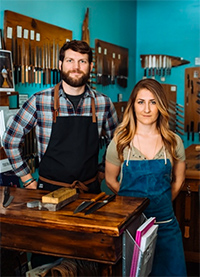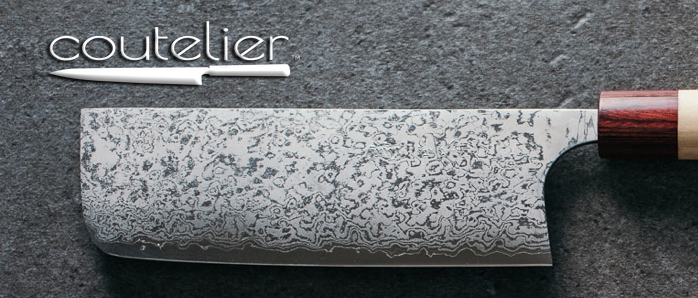 You think cooking the turkey is time consuming? Try carving it! The tedious task can be stressful and tiring but using the right knives and slicing properly makes the process much less dicey.
You think cooking the turkey is time consuming? Try carving it! The tedious task can be stressful and tiring but using the right knives and slicing properly makes the process much less dicey.
 For recommendations on what knives to use and how to carve your bird, we caught up with Jacqueline Blanchard and Brandt Cox, owners of premier knife retailer Coutlelier (and who both happen to have backgrounds as professional chefs).
For recommendations on what knives to use and how to carve your bird, we caught up with Jacqueline Blanchard and Brandt Cox, owners of premier knife retailer Coutlelier (and who both happen to have backgrounds as professional chefs).
Their New-Orleans and Nashville based retail shops source hand-forged knives and cutlery from the world’s top blacksmiths, providing tools to both home-chefs and professionals alike.
Here are their top tips to remember this turkey day:
·Cutting meat off the carcass: When carving near the bone, a thicker carving knife is best for getting meat off the carcass. You’ll need a boning knife for this, Blanchard and Cox suggest a 6-inch Honesuki – it has a thick spine that can hold up to the bone/cartilage.
· Work around the joints: Removing the legs and joints should be the first step in slicing your turkey. Make sure you’re using a knife with a strong point not a rounded one when cutting around the joints and cutting off the legs.
·Slicing for service: Use an 8 to 10-inch knife when slicing the breast meat. It’s best to slice the meat once it has been removed from the bone because slimmer knives can be susceptible to chipping.
·Keep the meat juicy: Using a knife no more than 3mm to slice, helps keep the meat from shredding and drying out, which is what happens with most electric slicers. This can also help reduce fatigue from too much slicing work.
 ·Store your knives: After washing the knives, rub some vegetable oil and wrap up in a towel for longevity. You’ll want to keep them fresh for the next holiday gathering!
·Store your knives: After washing the knives, rub some vegetable oil and wrap up in a towel for longevity. You’ll want to keep them fresh for the next holiday gathering!








